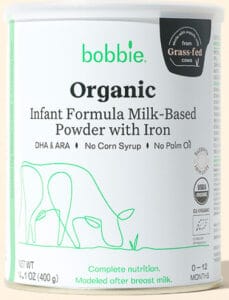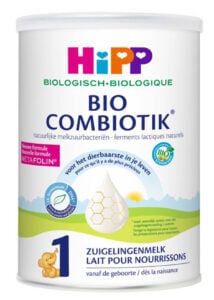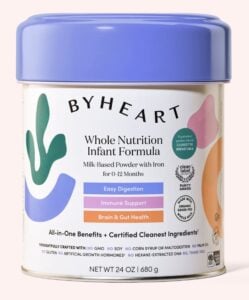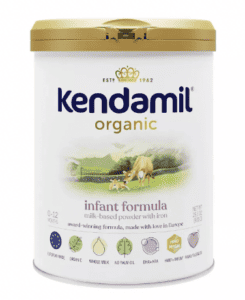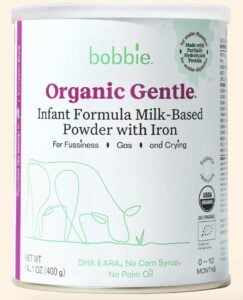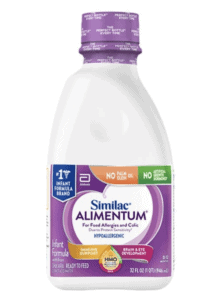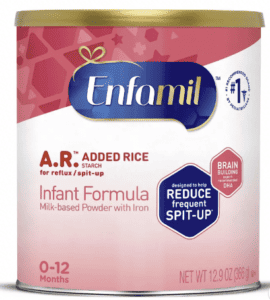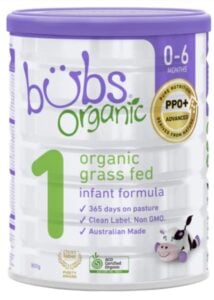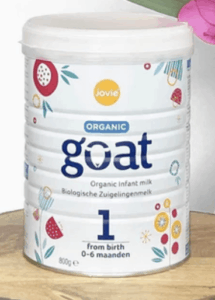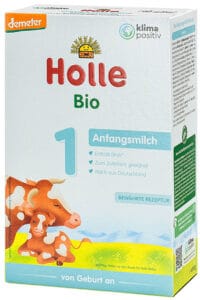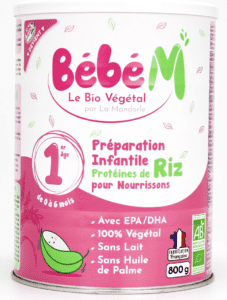Health
11 Best Baby Formula Brands (2024 Guide)

This post may contain affiliate links. As an Amazon Associate, I earn from qualifying purchases. Please read my disclosure.
Look no further for the complete list of the 11 best baby formula brands! With a high-quality and nutritious option for every baby, this guide covers it all from the best European & American formulas to the best vegan and goat milk formulas. In this comprehensive guide, I will lead you through the list of the best formulas on the market today, the differences between American and European brands, answer common questions about baby formula, and more! Let’s get started!
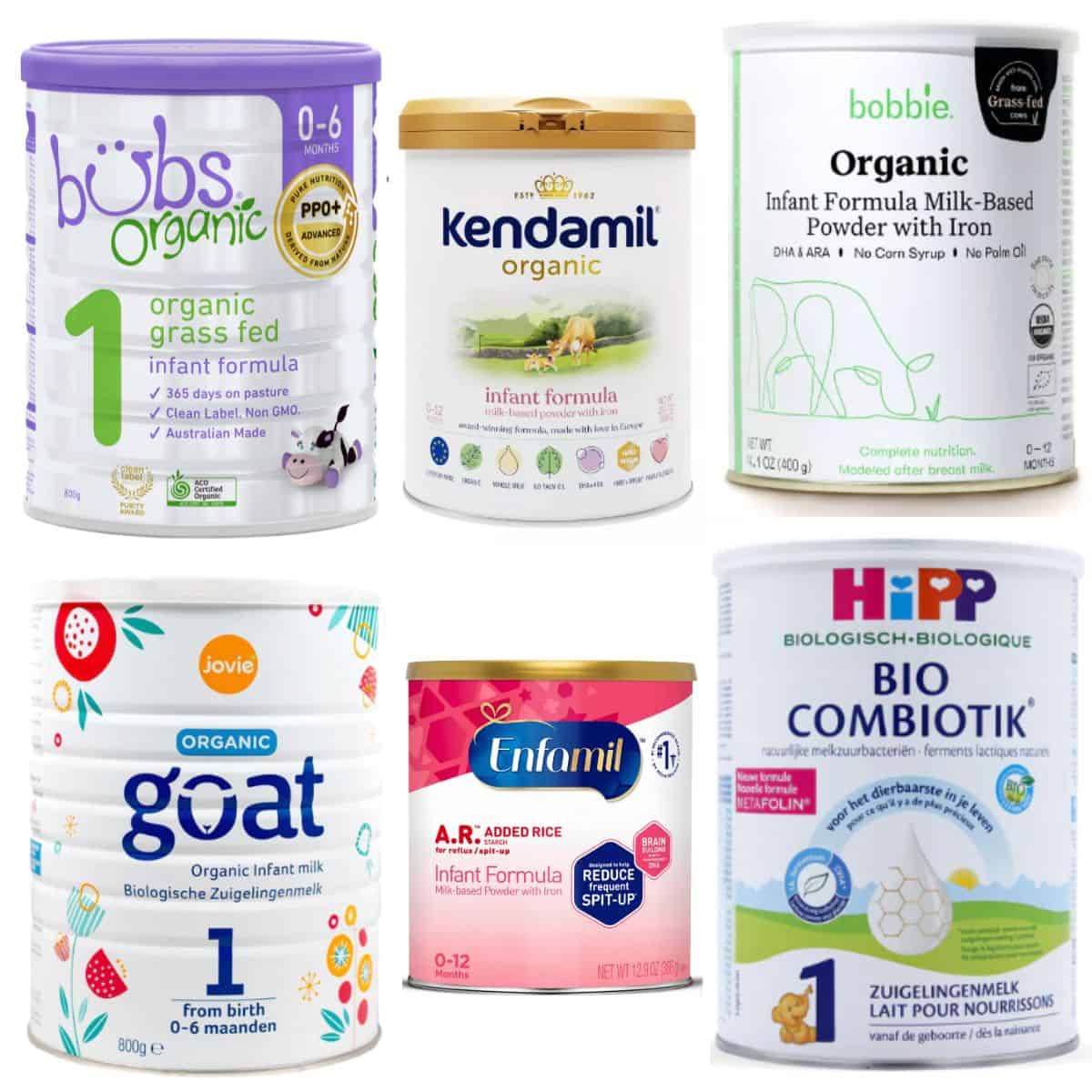

Not only can the decision to move to formula be a hard one, but the process of actually choosing the right baby formula can be just as challenging, if not more! One walk down the baby formula aisle and you may be overwhelmed by all of the different options – what nutrients and style does my baby need and which actually is the healthiest baby formula?
When I made the transition from breastfeeding to formula with my daughter, I encountered the same overwhelm and confusion. Being determined to find which baby’s formula option was the most healthy and nutritious for her, I embarked on a journey to learn as much about baby formula as possible. I interviewed doctors and pediatricians, pediatric dietitians, scoured baby formula ingredient lists, read scientific articles on formula ingredients, and more.
A great byproduct of all of this research is that I can now share all that I’ve learned, saving you the time and effort of doing so yourself! This list is a summary of the best formulas on the market – it is a collection of tried and true formulas as well as newer brands. All are sources of complete nutrition, made with the highest quality ingredients, and are options you can feel great about feeding to your little one.
A Note On Breastfeeding Vs. Formula
As you may have heard, breast milk is considered to be the gold standard for infant nutrition (source). Unfortunately, however, as many of us have experienced – breastfeeding is hard. It isn’t common to have milk supply or latching issues, overwhelming exhaustion, employers or work schedules that don’t support it, and more. Additionally, for non-birthing parents or adoptive parents, breastfeeding simply just isn’t an option.
If you are frustrated or disappointed that you aren’t able to breastfeed or need to wean earlier than planned, remember that the most important thing is the love and care you give your baby. Breast isn’t best; FED is best. Thankfully, there are now so many high-quality formula options available for formula-fed infants that you can feel – not just guilt-free – but great about what you choose to give your baby.
But First, A Disclaimer
As a board certified health coach and certified nutritionist, I support products and ingredients that are rooted in science and are evidence-based. Using my background in nutrition, along with extensive research (see below for details), consultations with experts, and my own personal experience giving my two kids formula, I was able to arrive at this list of the best baby formula brands in this guide.
My baby formula reviews and recommendations are based on:
- Over 150 hours of in-depth research
- Speaking with thousands of parents about what formulas have worked for them (along with personal experience of formula-feeding with my own two kids)
- Reviewing the manufacturer’s claims and ingredients list, stages, and varieties of over 65 different formula brands
- Speaking with doctors, pediatricians, and dietitians
- Reviewing countless articles and peer-reviewed studies
Though I may receive a commission (at no extra expense to you) if you purchase through some of the affiliate links provided, I only recommend products I’ve researched, evaluated, consulted experts on, and would feel comfortable giving to my own two children.
As always, I only share products that are the highest quality and that can help you and your family the most. By purchasing any of these products from the links below, you help keep this blog running, so thanks for your support!
Keep in mind that every baby & situation is different, so when it comes to choosing a baby formula, please consult with your child’s pediatrician first before starting or switching to a new formula. My recommendations are not a substitute for professional medical advice, diagnosis, or treatment.
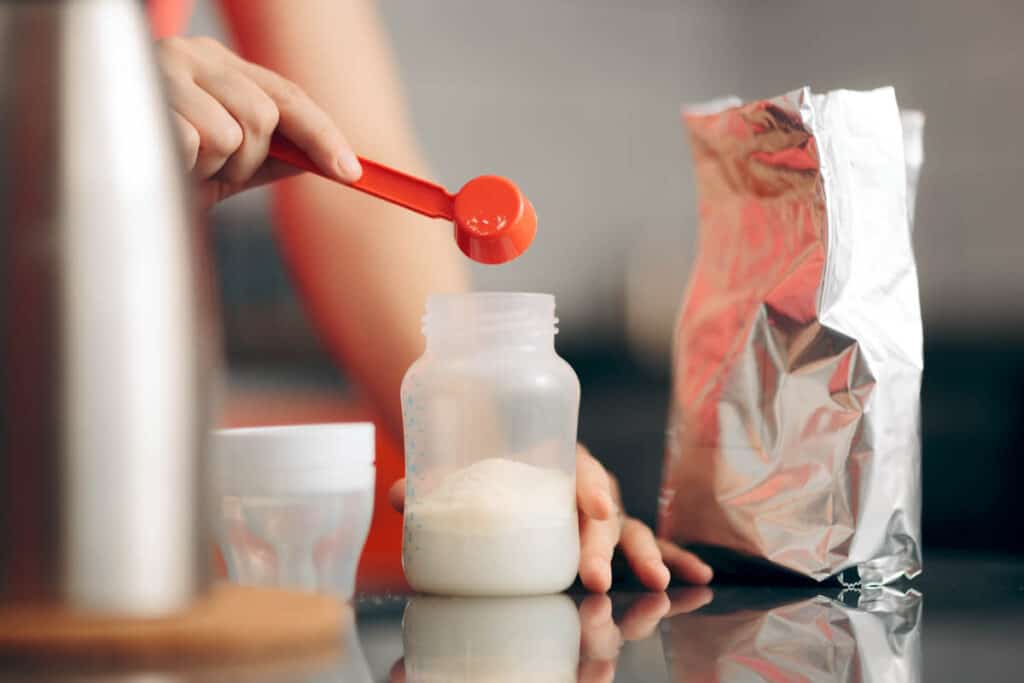

At A Glance: The Best Baby Formulas
Before we get into the specifics of which formulas are the best for each category, here is a list of our quick pics!
Best Overall American Baby Formula
Bobbie Organic Infant Formula
Why I Love It: In January 2022, a new US-based, healthy baby formula entered the market! Bobbie Organic Infant Formula is by far, the best baby formula made in the US today. It is fantastic for quite a few reasons: this organic formula is made with a European recipe but is made in the United States and is FDA-approved. It also meets the European Union’s nutritional standards and is made with only pasture-raised organic milk from Organic Valley, making it one of the best organic options available today.
A big part of what makes Bobbie the best overall is what it doesn’t contain: there is no corn syrup, sugar solids, palm oil, hexane-derived DHA, GMOs, gluten, or maltodextrin; just only wholesome and natural good-for-your-baby ingredients! It certainly is one of the best baby formulas around, not to mention one of the best American formulas without corn syrup.
Bobbie is formulated for infants aged 0-12 months of age and is not intended for premature babies. It has a whey-to-casein ratio of 60:40 which matches that of mature breast milk, making it gentle on digestion. There is more DHA in this formula than in most American-manufactured formulas, too – it comes in at 20mg/100kcal, the highest percentage in the US market that also meets EU standards.
There are a few drawbacks of this formula: it does not contain probiotics or prebiotics so you will likely want to supplement with those. It is also made with nonfat milk so an increased amount of vegetable fats need to be added to the formula to reach the macro blend needed to be a complete source of infant nutrition. The formula also only has one stage, which many other American formulas also have. Many European brands have 3 to 4 stages to account for the changes in their formulations which mimic the changes in breast milk as the baby matures.
Not only is Bobbie available for purchase in Target, but they also have a very convenient and flexible subscription model. To try out the formula before you subscribe, just grab their starter bundle, which offers two cans for the price of one!
Where To Purchase: Target & Company Website
Cost: $26 for a 400g (14.1 oz) can, which makes about 105 fl. oz of formula (or $.25/fl oz.).
Only US-based formula that is made with a European recipe
USDA Organic Certified and non-GMO
Meets EU formula nutrition requirements
Whey-to-casein ratio that is identical to that of breast milk (60:40 ratio)
No corn syrup, syrup solids, sugar, or maltodextrin
Formulated specifically for infants aged 0-12 months
Made with pasture-raised milk
Lactose is the only carbohydrate
Contains naturally extracted DHA & ARA
No prebiotics or probiotics
Does contain soy oil, but soy oil does not have the estrogenic components of soy protein so is less problematic
Only one stage of the formula
Not good for premature babies
Best Overall European Baby Formula
HiPP Dutch
Why I Love It: If you are looking for the best European-style formula that is made in the EU, HiPP Dutch is for you! This EU-brand makes some of the best baby formula in the world. It is organic and non-GMO, certified to European standards, made without sugar, starch maltodextrin, or soy, and it contains probiotics, prebiotics, DHA, and other omega-3s necessary for immune health and cognitive development (source, source).
Though it does not contain any sugar or starch, the formula is lower in lactose than some other brands of formula, making it gentle on developing little digestive systems. HiPP is also known to not cause colic, constipation, gas, or bloating.
The high quality of this formula combined with their unique formulations for specific ages makes HiPP a fantastic option for parents who want complete nutrition tailored to their baby’s age and developmental needs. The formula comes in 4 different stages, two of which are specifically formulated for your baby’s first year of life. For example, Stage 1 is formulated for babies under 6 months old; I consider it to be the best formula milk for newborns and babies 0-6 months old. Stage 2 is for babies 6-12 months old, making it a great option for older babies who have started to add solids to their diet.
Where To Purchase: TheMilkyBox.com
Cost: $48.99 for an 800g can, which makes about 210 fl oz of formula(or $.23/fl oz).
Offers different stages of formula starting from birth
Contains probiotics and prebiotics
Non hexane-extracted DHA & ARA
Whey-to-casein ratio is identical to that of breast milk (60:40 ratio)
Lactose is the only carbohydrate
Lower lactose for gentle digestion
No corn syrup, sugar solids, starch, or maltodextrin
Does contain palm oil, but is organically and sustainably farmed
Best Organic Baby Formula
ByHeart Whole Nutrition Infant Formula
Why I Love It: ByHeart Whole Nutrition Infant Formula is another new formula in the American baby formula market. Though some parents may be hesitant to try a newer company, this new brand ran one of the largest clinical trials by a new baby formula brand in 25 years. They tested it on 311 healthy babies over 6 months and even compared their formula to breast milk. No other formula companies have done that, proving how trustworthy the company is and how safe and healthy the formula is. Furthermore, ByHeart has received the Project Purity Clean Label award, certifying that each batch of formula has been tested for over 400 contaminants – including heavy metals, pesticides, dangerous microorganisms, and more.
If you are looking for the best formula for newborns, ByHeart is one of the best organic options. This brand is FDA-approved and made with organic grass-fed whole milk, not skim milk, meaning that they don’t have to augment the milk with as many additional vegetable oils. Other aspects that set this brand apart are that it is iron-fortified formula and includes two proteins, lactoferrin, and alpha-lactalbumin, that are in breast milk but not in many formulas, making its protein profile the most similar to human milk. Finally, you won’t find any corn syrup or sugar in ByHeart, making it a great infant formula without corn syrup.
The most significant drawback of ByHeart is that it does not contain probiotics and the whey-to-casein ratio is 80:20 (instead of 60:40, as is mature breast milk). Some parents have also reported the formula can be foamy when mixed up, but the company reports that mixing it with warm water can reduce this.
Currently, you can only purchase ByHeart on their company website. They do offer discounts for setting up a subscription service through their site, however.
Where To Purchase: Company Website
Cost: $42 for a 680g (24 oz) can, which makes about 168 fl oz of formula (or $.25/fl oz). Subscribe and save for as low as $39/can (or $.23/fl oz).
Clean Label Project Certified
Made with organic grass-fed whole milk (that is not treated with artificial growth hormones)
No corn syrup, sugar solids, or maltodextrin
Non hexane-extracted DHA & ARA
Lactose is the only carbohydrate
Contains lactoferrin and alpha-lactalbumin, two proteins that are also found in breast milk
Does not contain probiotics
Whey-to-casein ratio is 80:20 (not identical to breast milk)
Only available for purchase on the company website
Only one stage of the formula
Some parents report that the formula can be foamy
Best Baby Formula For Breastfed Babies
Kendamil
Why I Love It: Kendamil is a family-owned company based in the Lake District of the United Kingdom. Though they offer a standard and organic version of their formula, their standard formula is made with whole milk from Red Tractor-certified farms, or farms that produce their dairy according to high humane and quality standards, making it safe, traceable, and as nutritious as possible.
Kendamil’s Organic First Baby milk is made with 100% organic whole cow’s milk. Because both types of formula are made with whole milk, minimal added vegetable oils are needed to supplement the formulas to make them safe for formula feeding. This also makes this milk’s fat profile more natural and similar to the composition of breast milk.
Otherwise, both Kendamil traditional and organic are vegetarian-friendly, made with non-hexane-extracted DHA, have lactose as their only carbohydrate, and contain at least all of the minimum amounts of necessary vitamins and minerals – such as Vitamin E, Vitamin D, Iron, and Folic acid. They do not contain palm oil and are made without corn syrup or any other syrup or sugar solids, making it another great pick if you are looking for a corn syrup-free formula.
Where To Purchase: TheMilkyBox.com & Target
Cost Of Kendamil Organic: $53.99 for an 800g (28 oz) can, which makes about 215 fl oz of formula (or $.25/fl oz). Buy in bulk on TheMilkybox.com for as low as $47.99/800g can ($.22/fl oz).
Cost Of Kendamil Classic: $43.99 for an 800g (28 oz) can, which makes about 215 fl oz of formula (or $.20/fl oz). Buy in bulk on TheMilkybox.com for as low as $37.99/800g can ($.18/fl oz).
Red Tractor-Certified or Organic (depending on the version)
Whey-to-casein ratio is identical to that of breast milk (60:40 ratio)
Non hexane-extracted DHA & ARA
Offers different stages of formula starting from birth
No corn syrup or sugar solids
No starch or maltodextrin
Lactose is the only carbohydrate
Does not contain probiotics
Best Gentle Baby Formula
Bobbie Organic Gentle
Why I Love It: There’s good news if you are in the market for a gentle infant formula: Bobbie now makes and offers an Organic Gentle Formula! This cow’s milk-based formula is organic, non-GMO, meets European certifications, and is the first gentle formula to be made with only lactose as its only carbohydrate.
The main difference between the gentle formulation and Bobbie’s classic organic formulation is that the gentle is made with partially hydrolyzed proteins that are broken down into smaller segments called peptides. Such peptides, since they are less molecularly complex, are known to better support gentle digestion in little ones and be easier on sensitive stomachs.
Bobbie Organic Gentle is not suitable for babies who have a cow’s milk allergy, as the blend still contains cow’s milk proteins. Discuss hypoallergenic or elemental formulas with your doctor if your baby has such an allergy. This gentle formula is also not made for premature babies and it doesn’t contain prebiotics or probiotics, either. It is, however, made without palm oil, soy oil, corn syrup, and non hexane- extracted DHA and ARA, making it one of the best gentle formulas available in America.
Where To Purchase: Company Website
Cost: $28 for a 400g (14.1 oz) can, which makes about 106 fl oz of formula (or $.26/fl oz). Subscribe and save for 10% off your first month of formula.
Made with hydrolyzed proteins to support easy digestion
Whey-to-casein ratio is identical to that of breast milk (60:40 ratio)
Clean Label Project Certified
Non hexane-extracted DHA & ARA
Lactose is the only carbohydrate
No corn syrup or sugar solids
No starch or maltodextrin
Not suitable for babies with cow’s milk allergies
Does not contain probiotics
Does not contain prebiotics
Only one stage of the formula
Not suitable for premature babies
Best Hypoallergenic Baby Formula
Similac Alimentum RTF
Why I Love It: Similac Alimentum RTF is a liquid ready-to-feed formula that is specifically formulated for hypoallergenic infants or infants who have other food allergies, colic, or lactose sensitivity. Alimentum RTF is is more hypoallergenic than many European hypoallergenic options and can easily be purchased on Amazon and at many major retailers.
This hypoallergenic formula is made with hydrolyzed protein that is derived from milk but does not contain any milk protein. It also contains prebiotics, does not contain palm oil or maltodextrin, and has added DHA for brain and eye health.
I recommend the liquid ready-to-feed formula above the powdered formula, as it has less sugar. Unfortunately, it contains carrageenan which is known to cause intestinal inflammation (source), but otherwise is a solid option. Overall, both offerings are good choices when it comes to cow’s milk protein allergy-safe formulas; the form that you choose is ultimately a matter of personal preference, as the liquid is also slightly more expensive.
If you would rather go for a European hypoallergenic formula, HiPP HA is a great choice. It is non-GMO, made without any added sugar, and is maltodextrin-free. Furthermore, it contains probiotics, prebiotics, and DHA, and is certified to European standards. Because HiPP HA is made with hydrolyzed protein it isn’t as broken down as Alimentum RTF, making it not always the best option for infants with true cow’s milk protein allergy. If in doubt, consult your healthcare provider when choosing the best allergy-friendly option for your child.
Where To Purchase: Amazon and Target
Cost: $13.29 for a 32 fl oz, or $.41/fl oz, at Target. A pack of 48, 2-ounce bottles (or 96 fl oz of formula) is also available for purchase on Amazon. Subscribe and save on Amazon for up to 15% off.
Hypoallergenic-safe; contains no cow’s milk proteins
Suitable for cow’s milk allergy, colic, food allergies, and lactose sensitivity
Ready-to-feed options available
Does not contain probiotics
Best Baby Formula For Acid Reflux And Colic
Enfamil AR
Why I Love It: Made with added rice to prevent excess spitting-up associated with acid reflux and colic, Enfamil AR features a slightly thicker consistency which is clinically proven to reduce your baby’s spit-ups by over 50% in one week.
This formula meets the American Academy of Pediatrics’ reflux reduction guidelines and contains DHA, ARA, prebiotics, and probiotics. Though it does contain palm oil and maltodextrin, it is free of corn syrup, and sugar solids, and the only main carbohydrate other than lactose comes from rice.
An added benefit of Enfamil AR is that it is also sustainably minded: purchase the tub once and then refill it with more affordable cardboard boxes of the formula for easy recycling and reduced plastic usage.
Like with the Similac Alimentum, a good European alternative to this product is HiPP HA. This formula is made with hydrolyzed milk protein, prebiotics, and probiotics, to support gentle digestion while being made with all other organic ingredients. It contains non hexane-extracted DHA & ARA and is free of maltodextrin and corn syrup.
Where To Purchase: Amazon and Target
Cost: $56.99 for an 862g (30.4 oz) box, which makes about 212 fl oz of formula (or $.27/fl oz).
Clinically proven to reduce spit-up by over 50% in 1 week
More affordable for a specialty formula
Best Affordable Organic Baby Formula
Aussie Bubs Organic Grass-Fed Formula
Why I Love It: Though Aussie Bubs Organic Grass-Fed formula is Australian-made, it was approved by the FDA for sale in the United States during the 2022 formula shortage and has been available for purchase ever since! This is an exceptional product, especially for the low price of just $.22 per fluid ounce – the lowest of all organic formula prices!
There is so much more than just the price tag to love about Bubs, however. Their grass-fed variety is organic, non-GMO, and a Clean Label Project Purity award winner, meaning that it is tested for hundreds of contaminants, Furthermore, Bubs does not contain palm oil, corn syrup, maltodextrin, or hexane-extracted DHA.
Reach for Bubs if you want a high-quality formula that has lactose as the only carbohydrate, probiotics, prebiotics, naturally extracted DHA, more natural fats from a whole milk base, and two stages of formula to progress through as your baby grows.
Want to read more about this brand? Check out my complete Aussie Bubs Review!
Where To Purchase: Amazon and Target
Cost: $39.47 for an 800g (28.2oz) can, which makes about 180 fl oz of formula (or $.22/fl oz).
Certified to Australia’s stricter infant formula standards
Clean Label Project Certified
Whey-to-casein ratio is identical to that of breast milk (60:40 ratio)
Made with organic grass-fed whole milk
No corn syrup, syrup solids, sugar, or maltodextrin
Offers 2 different stages of the formula starting from birth
Lactose is the only carbohydrate
Contains naturally extracted DHA & ARA
Best Goat Milk Baby Formula
Jovie
Why I Love It: Goat milk baby formula can be another great option for babies who need a gentle digestion option or aren’t tolerating cow’s milk formula well. Whereas most cow’s milk formulas are made with A1 milk protein, goat milk has a different type of milk protein, A2 beta-casein milk protein. Also known as A2 milk protein, this is the same protein that exists in breast milk, making it generally easier for babies to transition to and tolerate (source).
With main ingredients of organic whole goat milk powder and organic lactose, you can feel great about feeding Jovie to your baby. The formula also contains prebiotics, non hexane-extracted DHA & ARA, and is made without palm oil, corn syrup, or maltodextrin. Though Jovie now also manufactures formula in the United States, it is a Dutch brand and is certified to European standards.
Purchase the stage of formula to best support your baby’s nutritional needs: Stage 1 for 0-6 months and Stage 2 for 6-12 months. Jovie also makes a Stage 3, a toddler formula for babies 12 months+.
Where To Purchase: TheMilkyBox.com
Cost: $63.99 for an 800g (28.2 oz) can, which makes about 182 fl oz of formula (or $.35/fl oz). Buy in bulk for as low as $56.99/can.
RELATED: The Best Goat Milk Formula
Certified to European standards
Made to encourage gentle digestion
Made with full cream goat milk
Lactose is the only carbohydrate
Contains non hexane-extracted DHA and ARA
Offers 3 stages of the formula starting from birth
No corn syrup, syrup solids, or sugar
No starch or maltodextrin
Does not contain probiotics
Best Sustainable Baby Formula
Holle Bio
Why I Love It: Give your baby some of the best in nutrition while being earth-conscious by choosing Holle Bio. Not only is Holle organic and non-GMO, but it is also Demeter certified. This certification is the highest organic certification in Europe, meaning that the farms the milk is sourced from are all chemical-free and only employ practices that promote animal welfare and environmental sustainability (source). The formula also comes in a cardboard box, making it easier to recycle or reuse.
This high-quality formula is made with lactose as its only carbohydrate, is vegetarian-friendly, and contains only naturally extracted DHA and ARA. The main drawbacks of it are that it contains palm oil and lacks probiotics and prebiotics.
Where To Purchase: TheMilkyBox.com
Cost: $28.99 for a 400g (14.1 oz) box, which makes about 100 fl oz of formula (or $.29/fl oz).
Organic, Demeter-certified, and non-GMO
Certified to European standards
Lactose is the only carbohydrate
Non hexane-extracted DHA & ARA
No corn syrup, syrup solids, or sugar
Offers 4 stages of the formula starting from birth
Does not contain prebiotics
Does not contain probiotics
Best Plant-Based Formula
Bébé M
Why I Love It: Not only is Bébé M plant-based and dairy-free, but it is also 100% vegan. Due to Vitamin D3 being hard and expensive to source from animal sources, many plant-based formulas do contain D3 derived from lanolin, or the wax-like substance found on sheep’s wool. The Vitamin D3 in Bébé M, however, is 100% vegan, making this one of the few only truly vegan formulas currently available.
Bébé M is manufactured in France, meaning that it is certified to European standards. It can be purchased in the United States through online retailers and is available in three different stages of formula to support every stage of your baby’s development. Every stage is made without palm oil and contains naturally extracted DHA. Though the formula does have ALA, an omega-3 fatty acid, it does not contain ARA, prebiotics, or probiotics.
Because this organic formula does not contain dairy, lactose, nuts, or gluten, it is a great allergy-friendly option for babies who have milk intolerances or allergies. It is important to note, however, that this product is labeled as “Foods for special medical purposes (FSMPs)” and should be only given under medical supervision. Always consult your pediatrician before introducing the formula to your baby.
Where To Purchase: OrganicsBestShop.Com
Cost: $64.99 for a 600g (21.2 oz) can.
Certified organic and non-GMO
Certified to European standards
Made with 100% vegan vitamin D3
Offers 3 stages of the formula starting at birth
Contains naturally extracted DHA
Does not contain probiotics
Does not contain prebiotics
What To Look For When Choosing Baby Formula
Shopping for a baby formula can be overwhelming! Formula marketing and product labeling highlight the selling points of their products, but what really matters when you are choosing a baby milk formula for your baby?
Here’s a quick list of what to keep your eye out for:
- Lactose As The Main Carbohydrate: Just as lactose is the main carbohydrate in breast milk, you want to choose a formula that has lactose as the number one carbohydrate in formula. Ideally, the formula will only have lactose, but if it has other forms like rice, lactose will be first on the ingredient list.
- Complete Nutrition: Choose a formula that meets the nutritional standards set by the Food and Drug Administration (FDA) in the United States or the European Commission in the EU. By doing so you can know that the formula contains all of the essential nutrients your baby needs for healthy growth and development.
- USDA Organic: When buying formula for your baby look for one that is certified USDA organic. This means that it was produced without pesticides, GMOs, or hormones and that it should not have any artificial ingredients, ensuring that it is as natural and nutritious as possible.
- Whey-To-Casein Ratio: To encourage gentle digestion, you want to find a formula that has a whey-to-casein ratio of 60 whey protein to 40 casein protein, or that which is the ratio of mature breast milk.
- Added DHA & ARA: DHA (or, docosahexaenoic acid) and ARA (or, arachidonic acid) are fatty acids that should be added to the formula, as they are both present in human breast milk. Both of the acids have been determined to help with eye and brain development and immune system responses, making them essential criteria ingredients in the best infant formula (source).
- No Added Sugars, Corn Syrup, Or Syrup Solids: If it isn’t in breast milk, why add these processed ingredients to baby formula? If shopping for a goat or cow’s milk based formula, the best choice is always one that contains lactose as the primary carbohydrate, not corn syrup or other sugars. If shopping for a hypoallergenic or plant-based formula, look for its main ingredients to be natural and non-sugar-based, such as rice, soy, or pea protein.
- Probiotics: Since breast milk contains probiotics, it is best to also look for a formula that contains them. Probiotics help to build healthy gut flora for your baby, bolstering their immune system and more (source). If a formula you choose overwise looks like a great pick but doesn’t contain probiotics, consider supplementing the formula with an infant probiotic.
- Prebiotics: These are the food ingredients that probiotics feed off of. HMO prebiotics, also known as human milk oligosaccharides, are present in human milk and are known to bolster the baby’s immune and digestive system (source). If possible, choose a formula that has these added.
What To Avoid When Choosing Baby Formula
- Added Sugars: Look for a formula that doesn’t contain added sugars in the form of syrups or syrup solids. Some to look out for are corn syrup, maltodextrin, sugar, or brown rice syrup, corn sugars, and syrup solids.
- Genetically Modified Organisms (GMOs): It is important to avoid GMOs when shopping for baby formula because they are known to be toxic to young children, are correlated with developing food allergies, can alter the nutritional value of food, and more (source).
- Hexane-Derived DHA And ARA: The DHA and ARA added to formulas can be extracted from algae and fungus naturally using water or chemically by using hexane. a neurotoxic petroleum-based solvent. While hexane is undetectable in the formula after processing, finding a formula that has naturally derived DHA is usually the best option.
- Synthetic Preservatives Or Stabilizers: The more natural the formula, the closer it can potentially be to breast milk. Some preservatives and stabilizers to watch out for beta carotene, ascorbyl palmitate, and carrageenan (source 1, source 2).
- Soy Or Soy-Based Formulas: Too much soy in infancy or otherwise has been linked to early menstruation and other health issues, making soy formulas a category to avoid if possible.
- Palm Oil: Some infant formula brands add palm oil to their formulas to create a fatty acid composition similar to that of human milk. This is problematic because researchers have discovered that palm oil inhibits the absorption of DHA, fat, and calcium as well as causing digestive issues (source), making an ingredient to avoid whenever possible.
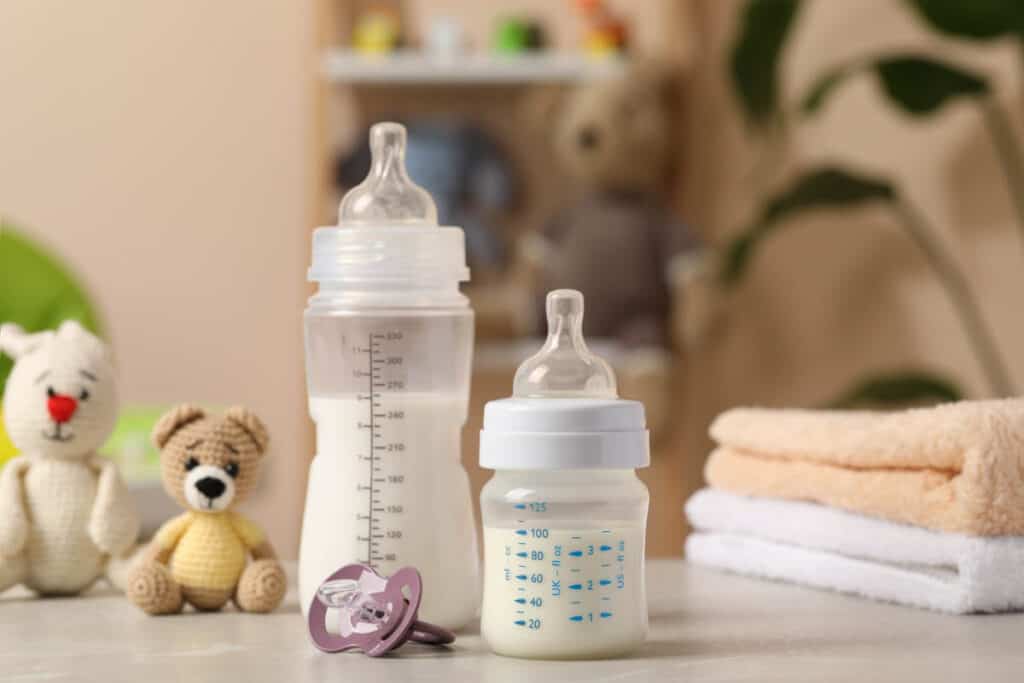

What Are The Differences Between American & European Baby Formula?
Unfortunately, many baby formulas made in the US contain at least one of the problematic ingredients listed above. There are newer American-made organic baby formulas, such as Bobbie and ByHeart, that have much better ingredient profiles, but European baby formulas can also be a great option for new parents to consider.
Here are the main differences between American and European Formulas:
- Regulating Body: U.S. formulas are regulated by the U.S. Food and Drug Administration or the FDA, whereas European formulas are regulated by the European Commission. The European Commission sets much stricter standards for their formula, as outlined in the following bullet points.
- Carbohydrates From Lactose: The European Commission requires that at least 30% of the carbohydrates in the formula come from lactose. Furthermore, they do not allow sucrose or corn syrup in baby formula (source). The FDA does not currently have a set carbohydrate standard and does allow the use of corn syrup in formula milk.
- Organic & Non-GMO: European formulas are required to be organic and non-GMO whereas the FDA does not currently require American formulas to be either.
- Omega 3 Fatty Acids: Formula sold in the EU is required to contain DHA. American formula brands are not required to add it (source 1, source 2 ).
- Vitamin D: An important supplement for babies who are recommended to avoid sun exposure, vitamin D aids in calcium and phosphorous absorption (source). American formulas are required to deliver 20 IU of vitamin D per 100 calories, whereas European formulas must contain at least 40 IU per 100 calories (source).
- Synthetic Chemicals And Preservatives: Formulas made in the EU are not allowed to contain any synthetic ingredients. U.S. formulas, on the other hand, are allowed to contain some (source).
- Iron: The minimum amount of iron required to be in European baby formula (1.3 mg/100kcal) is lower than that which is required to be in American formulas (1.8 mg/100kcal; source).
- Stages: Many European formula brands make different stages of formula for different ages of babies, replicating the changes in the profile of breast milk as babies get older (source). Almost all American formulas, on the other hand, only sell one stage of infant formula.
RELATED: 6 REASONS WHY PARENTS ARE OBSESSED WITH EUROPEAN BABY FORMULA
What Are The Different Types Of Baby Formula?
When you are shopping you will likely see that there are many types of infant formulas to choose from. Here’s a rundown of the different categories:
- Cow’s Milk Formula: Most formulas fall into the category of cow’s milk-based formula. To make this type of formula, cow’s milk is altered and enhanced to resemble breast milk so that it is more easily digestible while being a complete source of nutrition for babies.
- Hypoallergenic Formula: These formulas are for babies who have allergies or other serious health problems related to digesting cow’s milk formula. There are several types of hypoallergenic formulas including partially hydrolyzed, extensively hydrolyzed, and free amino acid-based to choose from.
- Goat Milk Formula: This formula is made with goat’s milk instead of cow’s milk. You may want to consider this option for a baby who has a cow’s milk sensitivity. Note: if they have a diagnosed cow’s milk protein allergy, your child’s doctor will likely recommend a hypoallergenic formula for them.
- Plant-Based Formula: If you are looking for a formula that is made with predominantly vegan or plant-based ingredients, plant-based, dairy-free, or vegan formulas are for you! Instead of being made with milk, they are made with rice, pea protein, or soy proteins. Vegan formulas are made with all plant-based ingredients as well as plant-derived vitamin D3. Plant-based formulas are made with primarily vegan products, except for ingredients such as animal-derived vitamin D3. Dairy-free formulas are made without milk-based products.
Different Forms Of Formula
Each of the above types of formula can come in a selection of different forms. They are:
- Powder: The most common form of formula is powder formula. It often comes in a canister or plastic container with a scoop and is mixed with water for easy reconstitution. Powdered formula is popular because it travels well, has a decently long shelf life, and tends to be more affordable and available for purchase.
- Liquid Concentrate: This form of formula is a concentrated liquid. These liquid formulas are mixed one-to-one with water. Because of their convenience, they tend to be more expensive than powdered formulas. Furthermore, parents need to be sure to not add too much water when reconstituting the formula for feeding.
- Ready-To-Feed: For utmost convenience, choose a ready-to-feed formula. As the name implies, this formula is sold in small containers which contain formula that just needs to be poured into a bottle to feed. This form is the most expensive and also can be prone to error if formula preparers accidentally add additional water to it before feeding.
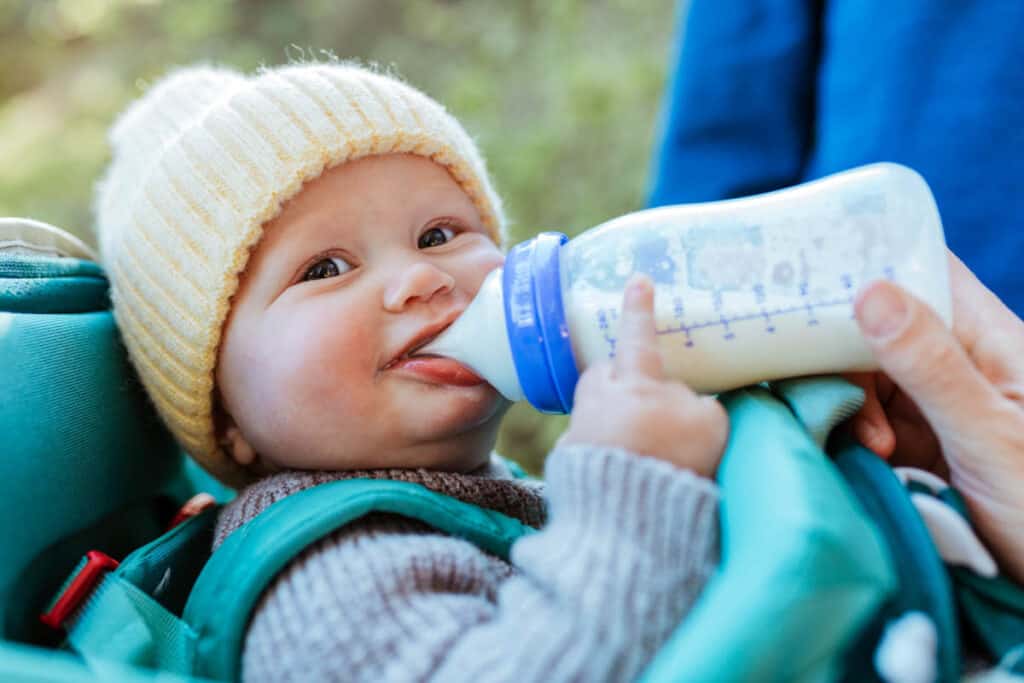

FAQs
Baby formulas are intended to be a substitute or a supplement for breast milk, you might assume most formulas would then be designed to closely resemble breast milk in their ingredients. However, many formulas on the market contain synthetic ingredients. Lactose is the main carbohydrate source in breast milk. The other main components of breast milk are proteins and fats. Finding a formula that features lactose as the main carbohydrate, whey as the protein, and a fat blend that doesn’t contain palm oil is the way to go when looking for a formula that most closely resembles breast milk.
If you are looking to supplement breastfed babies with formula or transition them to formula altogether, the best formula for infants is one that has a whey-to-casein ratio of 60:40 (the same as that of mature breast milk), has a smooth and creamy texture similar to human milk, and that does not cause indigestion, spit-up, or allergy issues. A few formula brands that fit this criterion are Bobbie, HiPP, Aussie Bubs, ByHeart, Holle, and Kendamil.
Yes, all formula brands that want to go to market in the United States need to meet FDA regulations before hitting store shelves. The FDA sets safety standards, such as a minimum number of nutrients, the safety of the formula ingredients, and the accuracy of product labeling, and more that need to be met before being approved (source).
This regulation standard applies to both American-made and select European-made formulas that are available for purchase in American stores, as select European brands have been approved by the FDA for sale in the U.S. in response to the 2022 formula shortage.
There are currently many different great brands of healthy and quality baby formulas available for sale. The best formula for babies is the one that your baby likes, is made without corn syrup, has lactose as the only carbohydrate, is made with as many natural ingredients as possible, and fits your family’s budget. Some of my top recommendations for baby formula are Bobbie, ByHeart, HiPP, Kendamil, and Aussie Bubs.
From a health perspective, organic formula is better than conventional formula because it is free from pesticide residue. It is also made under stricter regulations, ensuring a higher quality of product. Because of this, organic formulas are often more expensive and can therefore be cost-prohibitive for families.
If an organic formula is out of your family’s budget, consider a non-GMO formula, as it will at least not contain any genetically modified ingredients or herbicide residues, which are thought to be detrimental to babies and young children (source). For a more affordable organic brand, consider Aussie Bubs. It is one of the most budget-friendly organic formulas available, coming in at $.22/fl oz.
Though it is generally safe to switch baby formulas, it is often wisest to do so after speaking with your baby’s pediatrician. All formulas approved for sale are tested to be safe and complete sources of nutrition, but some will have protein profiles and flavors that make it easier to transition between.
So, if you decide to make the switch after consulting your doctor, it is recommended to find a formula that has a whey-to-casein ratio similar to that of the original formula.
Furthermore, make the switch to the new formula gradually, mixing the old and new formulas for a few days before slowly increasing the amount of the new formula and decreasing the amount of the old formula until the transition has been made to entirely the new formula. Note that some burping or light indigestion is normal when switching brands; if it continues beyond a few days, however, contact your doctor.
Signs of baby formula intolerance are:
* Unusual fussiness or crying
* Resists sleeping and eating
* Cries more often than usual
* Diarrhea
* Blood in the stools
* Vomiting
* Is in pain: wiggles, squirms, tenses muscles, or pulls legs up to their belly
* Makes uncomfortable faces such as squeezing eyes closed or frowning
* Slow weight gain
If your baby shows any of these signs after starting a new formula, consult your pediatrician immediately (source).
Babies can start the process of transitioning off of formula after 1 year. At this time, the American Academy of Pediatrics (or AAP), recommends transitioning babies to whole cow’s milk.
For the most success, make this transition gradually as you would if you were switching formulas (see “Can I switch baby formulas?” above for reference). Also, don’t ever transition babies off of formula or breast milk before 1 year, as the rapid rate of growth and development that babies experience from 0-12 months old requires additional nutrition that formula or breast milk has but whole milk does not.
If you are ever in a position where you cannot find your baby’s formula in stores or online through reputable trusted retailers, reach out to your baby’s pediatrician. They may have extra cans of formula or be able to reach out directly to a manufacturer to procure formula for you. If they do not have the formula or cannot otherwise source it for you they can also make recommendations for other brands to switch to.
Though some experts say that you do not need to reach out to your healthcare provider if you run out of formula, since many brands of American formula are very similar (source), you will certainly want to do so if your child is on a hypoallergenic, anti-gas or colic, or sensitive formula.
Final Thoughts
I hope this list of the best formula brands helped you in your decision-making process. There is no perfect formula, but all of the options on this list are the best of their kind. Always discuss your formula choice with your doctor. For any additional medical-related questions, you will also want to consult them.
If you have tried any of these formulas or have discovered any other fantastic brands, please share them in the comments section below – I love reading your comments and respond to every note I get!
More Baby Formula Guides!
Health
The Hazards and Blessings of Being Male: Embracing the Seven Challenges For a Successful Life

Although there have been infinite varieties of life forms that have evolved on Earth in the last 4 billion years, two life forms that are our male and female ancestors evolved a billion years ago. Here’s how this first sexual experience occurred according to cosmologist Dr. Brian Swimme and historian Dr. Thomas Berry in their book, The Universe Story.
The first male organism—they call him Tristan—and the first female organism—they call her Iseult—began life in the ancient oceans. Swimme and Berry describe their chance encounter this way:
“They were cast into the marine adventure, with its traumas of starvation and of predation. Able to nourish themselves but no longer capable of dividing into daughter cells, such primal living beings made their way through life until an almost certain death ended their 3-billion-year lineage.
A slight, an ever so slight, chance existed that a Tristan cell would come upon a corresponding Iseult cell.They would brush against each other, a contact similar to so many trillions of other encounters in their oceanic adventure. But with this one, something new would awaken. Something unsuspected and powerful and intelligent, as if they had drunk a magical elixir, would enter the flow of electricity through each organism.
Suddenly the very chemistry of their cell membranes would begin to change. Interactions evoked by newly functioning segments of her DNA would restructure the molecular web of Iseult’s skin, so that an act she had never experienced or planned for would begin to take place—Tristan entering her cell wholly.”
Of course no humans were there to record this original encounter, but we all have origin stories and this one resonates with me. Dates are never exact and change as more information is gathered. Here are some additional dates I found important in The Universe Story timeline:
- 12 billion years ago, the universe begins.
- 4 billion years ago life first emerges.
- 1 billion years ago sexual reproduction evolves.
- 216 million years ago the first mammals appear.
- 30 million years ago the first apes inhabit the earth.
- 2.6 million years ago the first humans appeared.
- 200,000 years ago Archaic Homo sapiens evolved.
- 10,600 years ago first settlements in the Middle East emerged and wheat and barley were cultivated.
Needless to say, we have a long evolutionary history to embrace. In their book, Solving Modern Problems with a Stone-Age Brain, Douglas T. Kenrick, PhD and David E. Lundberg-Kenrick describe seven evolutionary challenges we must all face and embrace. They offer a visual summary as a revision of Maslow’s original Hierarchy of Human Needs which they call The New Pyramid of Human Motives:

The Seven Challenges for a Successful Life
During the billion years of life, all organisms must embrace these challenges and they are particularly relevant beginning with our mammalian history. In their book, the Kenricks ask, “What are the fundamental problems of human existence?” They go on to share the results of their research.
“Together with a large team of researchers at more than 30 universities on five continents, we have been investigating the universal motivations faced by human beings around the globe.”
Here is a summary of their findings:
We must meet our basic physiological needs for shelter from the elements,
water, and food.
- Protect yourself from attackers and plunderers.
Given the scarcity of resources and the ever-present possibility of starvation, there has always been competition among different groups (most often the male members) for precious real estate and resources (including access to females).
As the Kenricks remind us. “Our ancestors were not rugged individualists.
They need to band together not only to protect themselves from bands of
marauding bad guys but also to accomplish most of the tasks of everyday life.”
Some people have always been more resourceful and clever than others and
some were more willing to bravely defend their groups against armed marauders.
Those resourceful and courageous individuals won higher status and gained
greater respect.
“From the perspective of evolution by natural selection,” say the Kenricks, “this
step is essential. Every one of our ancestors managed to attract at least one
person who wanted to make with them. Not everybody in the ancient world got
to reproduce, though, and a reasonable percentage of men went unmated.” This
fact, is of major importance when understanding male desires, fears, and
behavior.
From an evolutionary perspective, we not only have to find a mate who will have
sex with us, but we need to hold on to our mate long enough to have a child and
raise the child to maturity, so they can find a mate and continue the process.
- Care for your family members.
Unlike other animals, human males are much more involved with raising children, since human children require long-term care before they reach reproductive age.
Males and Females Are Alike and Also Different
Males and females are alike in that they must both successfully meet the seven challenges noted above. However, there are also significant evolutionary differences. These differences first came home to me when I first met psychologist David M. Buss and read his book, The Evolution of Desire: Strategies of Human Mating.
“If mating desires and other features of human psychology are products of our evolutionary history,” says Dr. Buss, “they should be found universally, not just in the United States.”
To test his theories, he conducted a five-year study working with collaborators from thirty-seven cultures located on six continents and five islands. All major racial groups, religious groups, and ethnic groups were represented. In all, his research team surveyed 10,047 persons world-wide.
Dr. Buss concluded that there are actually two human natures, one male, the other female. What do women really want? Buss found that the top three qualities that women look for in men are exactly the same as those things that men look for in women: Intelligence, kindness, and love. Then, what women want diverges from what men want.
“Women then look at a man’s ability to protect her and her children, his capacity to provide, and his willingness to make commitment to a relationship,” says Buss.
What do men really want?
“A man is drawn to youth and beauty,”
says Buss.
“This interest is not just a modern desire driven by advertising and male desire to control women [though advertisers take advantage of our evolutionary-driven desires]. It is a universal desire based on evolutionary pressures for reproductive success. Men who mated with women who were incapable of bearing children left no ancestors. Every man alive today is descended from men who did not make that mistake. Worldwide, men are drawn to younger women.”
Note: Just because we have these evolutionary-based desires does not mean we must act on them, that they are good for us, or will make us, or the partners we desire, happy. It also does not mean they are hard-wired into our biological makeup and can’t be changed. It does mean that we must take seriously our evolutionary-based desires and listen to the ancient “whisperings within” that pull us in certain directions.
The Hazards and Blessings of Gender-Specific Health
The ancient Roman philosopher, Virgil offers a simple truth to consider.
“The greatest wealth is health.”
A modern American medical doctor, Marianne J. Legato, M.D., world-renowned cardiologist and founder of The Foundation For Gender-Specific Medicine, says,
“The premature death of men is the most important—and neglected—health issue of our time.”
Although human males, as a group, occupy more positions of power in government and business than women, it has come at a price. This was first brought home to me by psychologist Herb Goldberg, in his book 1976, The Hazards of Being Male.
“The male has paid a heavy price for his masculine ‘privilege’ and power. He is out of touch with his emotions and his body. He is playing by the rules of the male game plan and with lemming-like purpose he is destroying himself—emotionally, psychologically and physically.”
In recent years we have learned a lot more about the realities of being male.
“If it’s true that men rule the world, it comes at a heavy cost,”
says Dr. Legato.
“From conception until death, men are inherently more fragile and vulnerable than women. In virtually every society today, men die first.”
Dr. Legato offers the following facts of life:
- The male fetus is less likely to survive the womb than the female.
- Boys are six weeks behind in developmental maturity at birth compared to girls.
- Men have four times the developmental disabilities of females.
- Men suffer more severely than women from seven of the ten most common infections that human experience [Including Covid-19].
- Men are likely to experience the first ravages of coronary artery disease in their mid-thirties, a full 15 or 20 years before women.
- Twice as many men die of heart disease, the leading cause of all deaths, than do women.
- Men die by suicide 4 times more than women.
- Murder and homicide are among the top four killers of men from the time they are born until heart disease and cancers begin to claim those who survive into middle age.
Accepting the realities of our own inherent weakness and vulnerabilities instead of trying to pretend we are masters of the universe is the first step we just take to begin our own healing and recovery.
I have been writing a series of articles on the Future of Men’s Mental Health. In Part 3, “Gender-Specific Healing and Man Therapy,” I explore my own healing journey and issues that address the unique problems faced by men and how the emerging field of Gender-Specific Healing and Men’s Health is a key to the future of health care. If you’d like more information about upcoming trainings, drop me an email to Jed@MenAlive.com and put “Gender-Specific Health Training” in the subject line.
Health
Healthy No-Bake Peanut Butter Bliss Balls

This post may contain affiliate links. As an Amazon Associate, I earn from qualifying purchases. Please read my disclosure.
My no-bake, healthy peanut butter bliss balls are loaded with creamy peanut butter and chocolate flavor, making them a hit with both kids and adults alike. Enjoy these as an on-the-go breakfast, wholesome snack, or healthy dessert alternative! They’re also dairy-free, vegan, gluten-free, and low in sugar, making them ideal for a variety of dietary preferences.
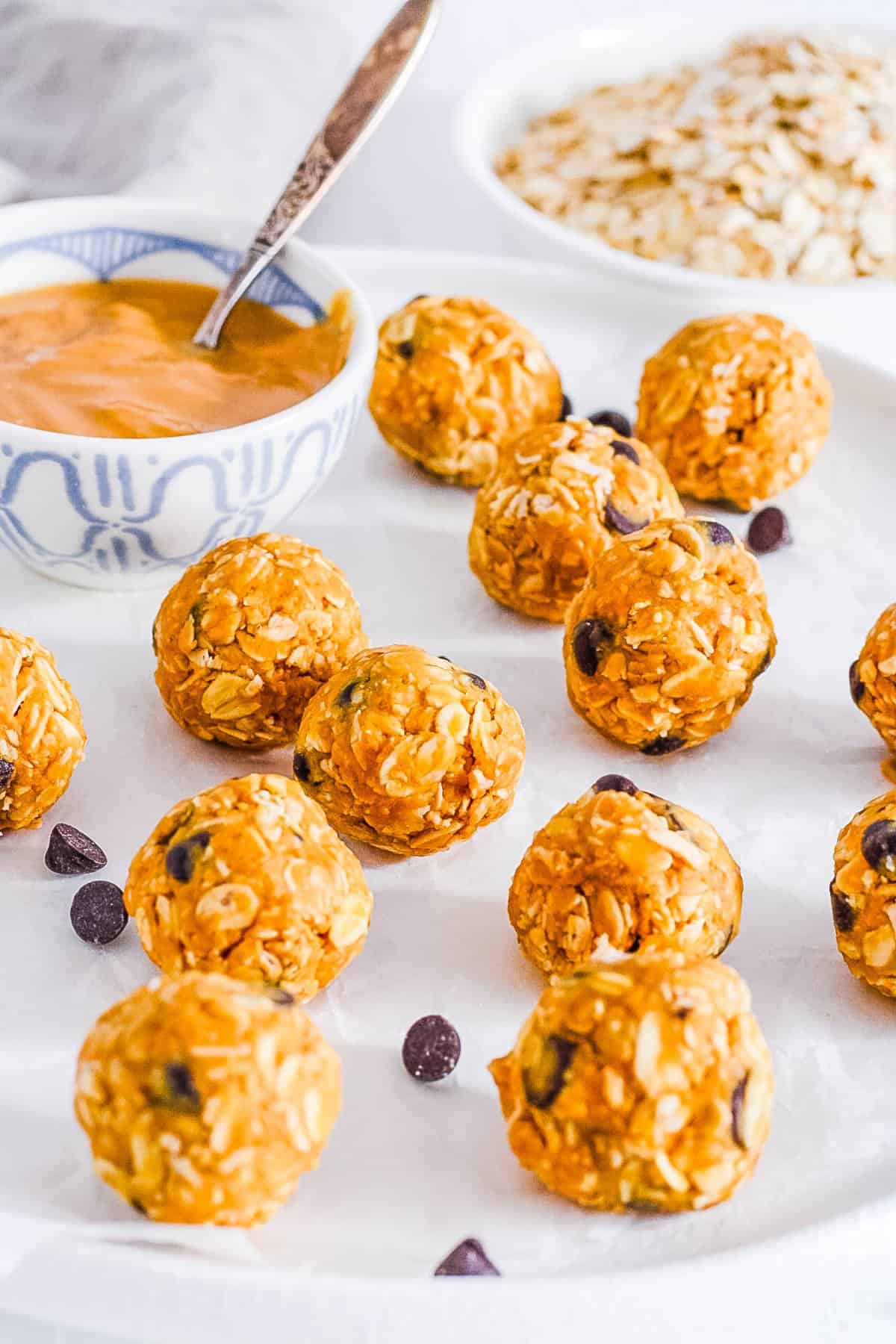
Indulge in my delicious no-bake peanut butter bliss balls, affectionately called “cookie dough bites” by my daughter. They taste like dessert, but are totally guilt-free and nutrient-rich! I love bliss ball recipes like this one because they come together quickly, and always satisfy my sweet tooth!
With only five simple ingredients and just ten minutes of prep time, bliss balls are a perfect option for busy days. I especially love making a huge batch at the beginning of the week, and enjoying them all week long for ultimate convenience. I find that they taste even better the next day, once they’ve had time to chill in the fridge for a while longer!
These protein balls with peanut butter are such a fun treat for any time of day! I really love how versatile they are – I’ll often use them as part of a quick breakfast, for packing in my kids’ lunches, or as a mid-afternoon snack.
Made with natural peanut butter, hearty oats, and a touch of pure maple syrup, I’ve crafted these bliss balls to be as healthy as possible. You won’t find any refined sugar here, even with these healthy swaps they still taste just like cookie dough. And each ball has only 90 calories and 3 grams of sugar!
I’ve also made sure that these wholesome ingredients can come together with minimal equipment required. No need to deal with your bulky food processor and spend all that extra time cleaning!
And my all time favorite thing about this recipe is that it’s a great way to involve kids in the kitchen. My kids have so much fun helping me out and adding in their own special twists.
Your family can also customize them in so many different ways, changing things up based on your preferences! I’ll share my favorite variations later in this post (like my peanut butter bliss balls with protein powder)!
Latest Recipe Video!
🥘 Ingredients
My easy peanut butter bliss balls recipe calls for just 5 nutritious ingredients, all easily found in your pantry or local grocery store. Here’s what you need:
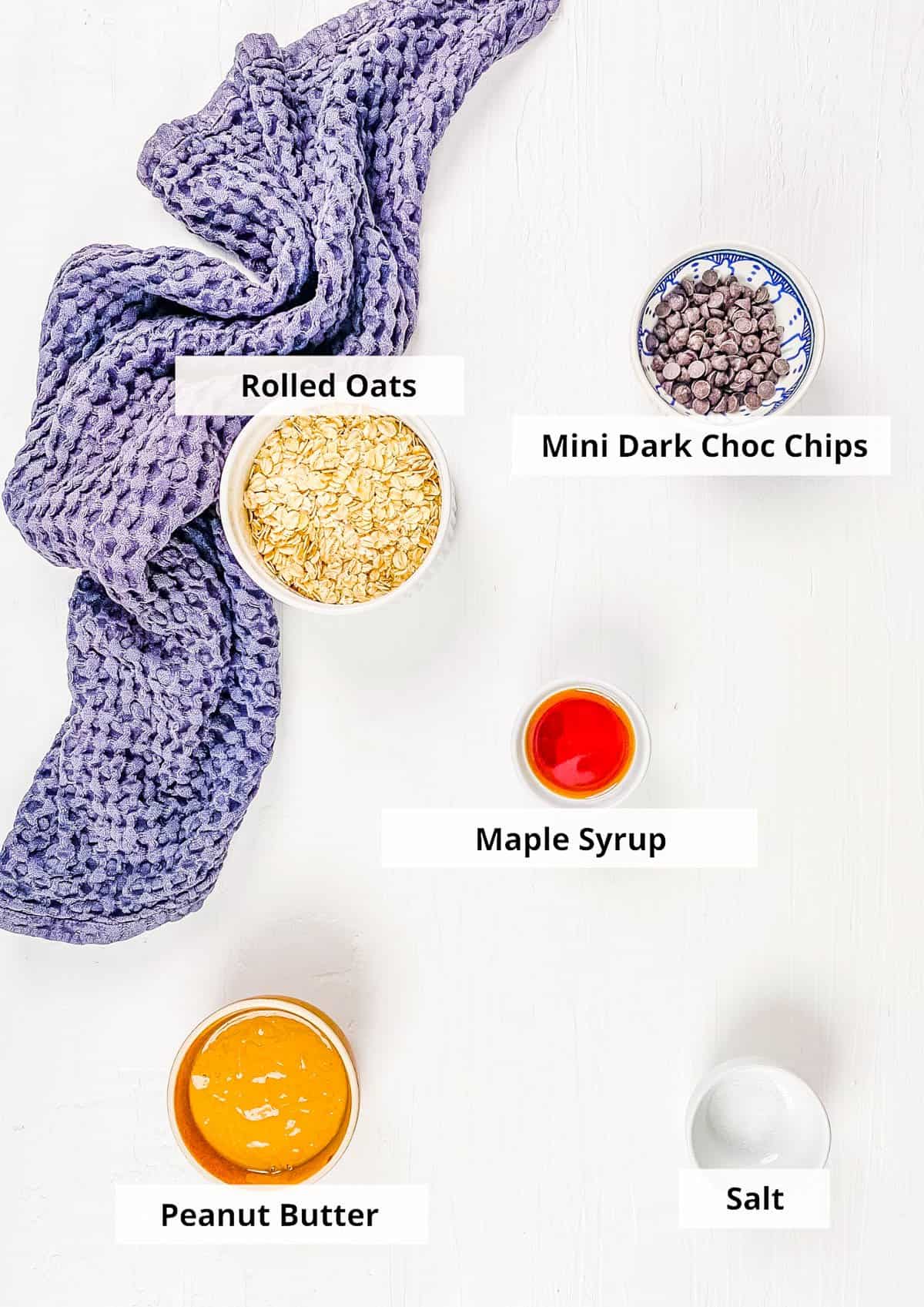
Oats: I’ve found that rolled oats work best for these kid-friendly bliss balls. I don’t recommend using oat flour or quick oats as it won’t have the same texture as whole oats, and won’t hold up as well.
Natural Peanut Butter: I use creamy peanut butter to bind all the ingredients together and add a boost of protein to these energy bites. If you don’t have peanut butter, try almond butter as a 1:1 substitute. Other nut butters (like cashew butter or a mixed nut butter) should also work in place of peanut butter, but the bites might have a slightly different consistency since some nuts create a thinner or runnier butter than others!
Dark Chocolate Chips: I prefer using dark chocolate chips for a healthier choice. These can be regular or mini chocolate chips. To keep this recipe vegan-friendly, I’ll use dairy-free chocolate chips. If you don’t need these to be vegan, then semisweet, white chocolate, or milk chocolate chips are all yummy options.
Maple Syrup: The only added sugar is natural maple syrup which gives the bliss balls a slightly sweet taste. If you don’t have maple syrup on hand, agave, raw honey, or vegan honey work.
Vanilla Extract: Pure vanilla extract brings out the richness of the chocolate. Sometimes I also add a pinch of salt to really enhance the sweetness. For a nutty flavor, try using almond extract.
🔪 How To Make Peanut Butter Bliss Balls
My vegan no bake peanut butter balls are so easy to make – they’re ready in just 3 simple steps. Let me show you how to make these healthy dessert balls:
Combine Ingredients: In a large bowl, using a wooden spoon, I start by stirring together the oats, peanut butter, chocolate chips, maple syrup, vanilla, and salt until combined.
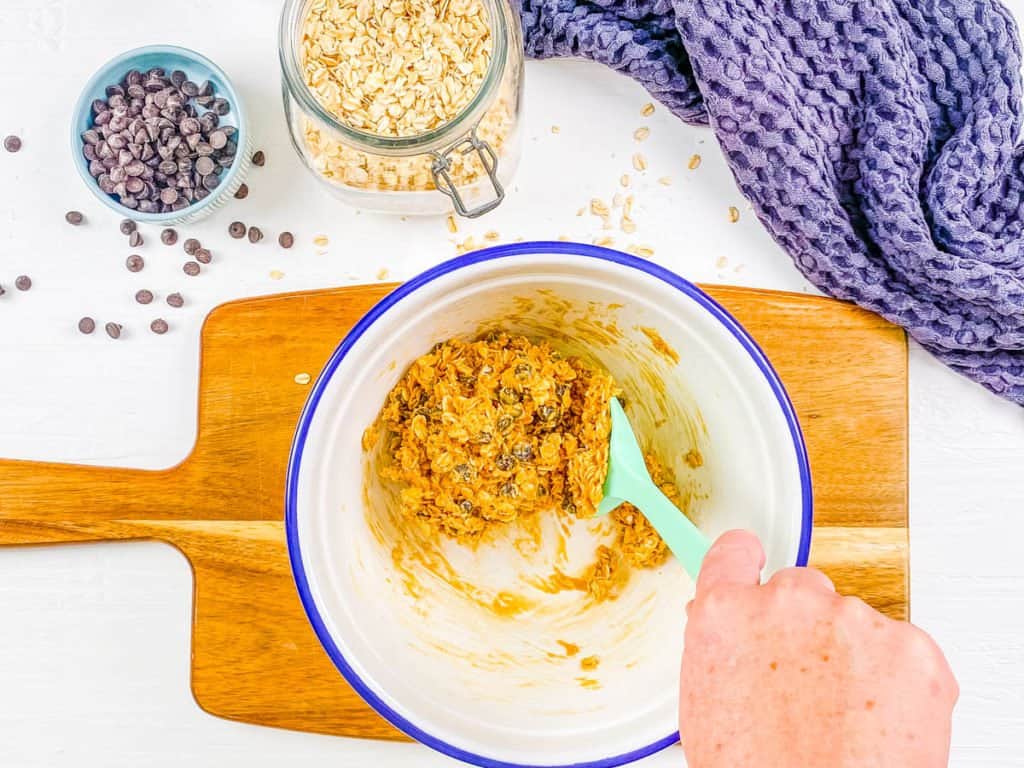
Form The Bliss Balls: Next, I line a baking sheet with parchment paper. Taking small handfuls of the mixture, I roll them into small balls 1-2 inches in size – about the size of a golf ball or ping pong ball. I prefer to use a cookie scoop to make this step extra easy. Place each ball onto the baking sheet.
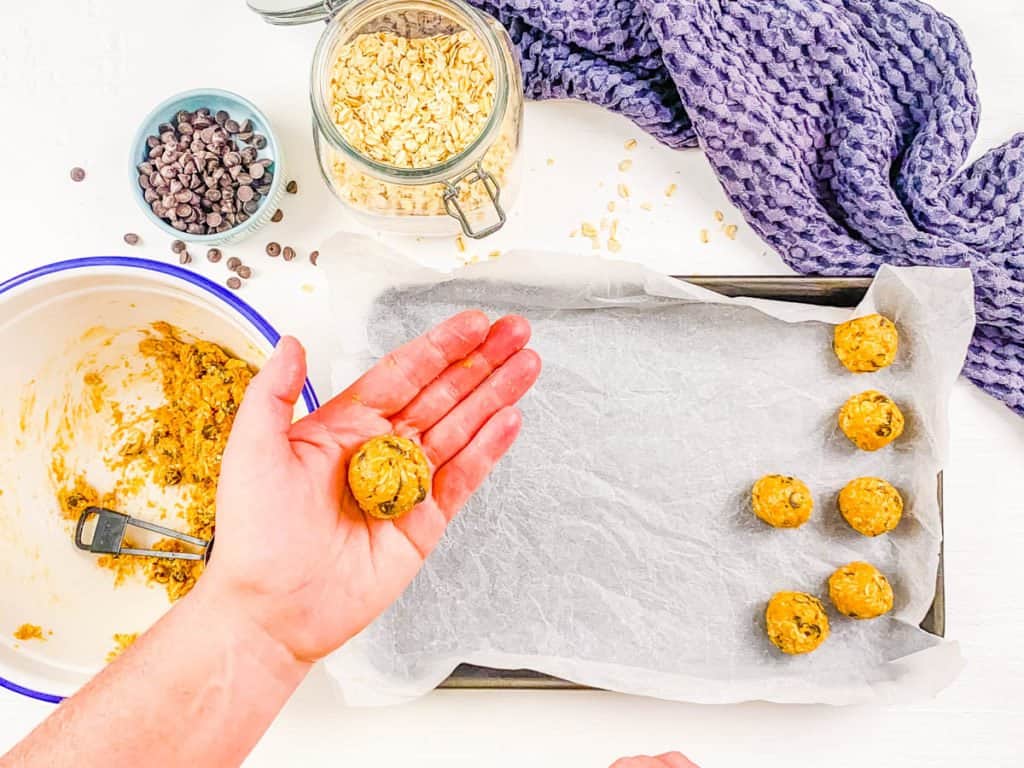
Let The Balls Set: Once rolled, I refrigerate these peanut butter snack balls for 30 minutes or until solid.
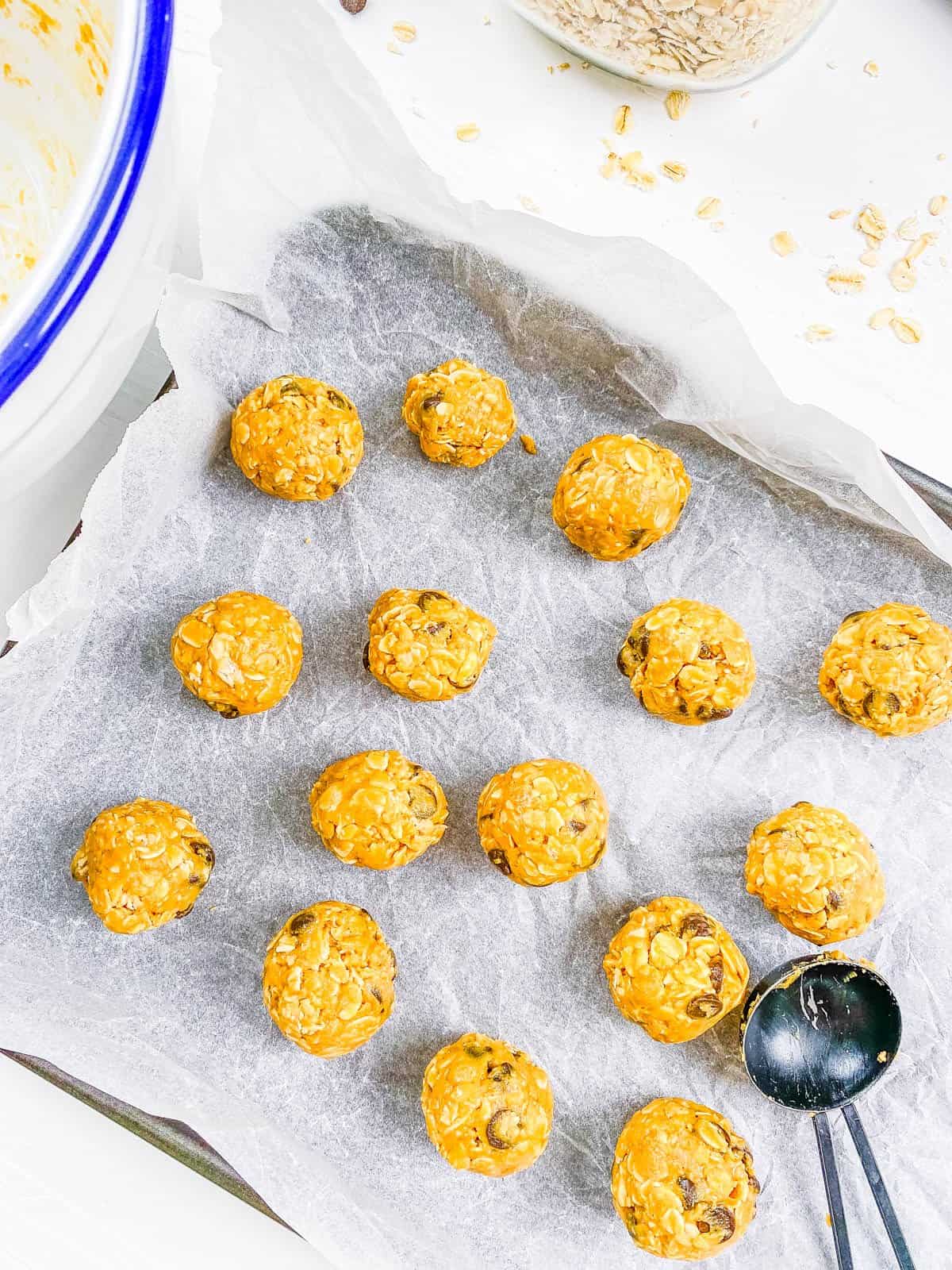
My #1 Secret Tip for this recipe is to make sure you measure ingredients precisely, with the right ratio of wet to dry ingredients.
While there is a little wiggle room with these bliss balls due to them being a no-bake recipe, I recommend being precise with all measurements to ensure ensures that the mixture has the right consistency to hold together without being too sticky or crumbly.
The creamy peanut butter is critical as the binding ingredient for these bliss balls, and I find it to be especially important to measure correctly. Too much or too little will throw the whole recipe off, leading to a mixture that is either too wet and sticky or too dry and crumbly.
After trial and error, I have found that achieving this balance is important for forming perfect bliss balls that stay intact and have a great texture.
Other Tips To Keep In Mind:
- Use The Right Tools: I like to use a cookie scoop to get all of these no-bake bliss balls the same size and to help my hands stay mess free!
- Check The Oats: If you or someone in your family is gluten intolerant, be sure to check the packaging on your oats for gluten-free certification. Some oats can be at risk for contamination with gluten substances.
- Involve The Kiddos: My kids love to help out in the kitchen, and this no-bake recipe is perfect for kids of all ages! They can learn how to measure out ingredients, combine ingredients, and roll the mixture into perfect ball shapes!
- Adjust For Moisture: If the dough seems too wet to mold into balls, consider adding a tablespoon or two of oat flour or almond flour. This will help to firm the mixture up so that it holds its shape and doesn’t stick to your hands.
- Bliss Balls For Kids: If you want to make these as toddler peanut butter balls I recommend reducing or omitting the sugar! You might also want to cut them into smaller bites when serving.
📖 Variations
I’ve perfected a few easy swaps and add-ins for when I’m looking to switch up the taste or texture a bit with these healthy kid-friendly bliss balls. There is something for any occasion! Here are my favorite variations:
Peanut Butter Protein Balls: If you want to turn these peanut butter protein bliss balls, consider adding a scoop of vegan vanilla protein powder to the batter before mixing it. You can use up to 2 scoops of protein powder, depending on the flavor of the protein powder you use. Sometimes I also add 1 tablespoon of ground chia seeds, flax seed, or hemp seeds for an extra boost of protein and healthy fats.
Chocolate Bliss Balls With Peanut Butter: For a double serving of chocolate, add a tablespoon of cacao or cocoa powder to the batter before mixing. I love the rich and indulgent flavor that this gives this recipe! I serve this as a healthy kids dessert often!
Peanut Butter Date Bliss Balls: For a sweeter flavor, I like to add a ¼ cup of Medjool dates, soaked and drained. I use a food processor when adding dates so that they are completely incorporated with the peanut butter and oats.
Sugar-Free Bliss Balls: If you want to make these no-bake peanut butter balls truly sugar-free, you can omit the maple syrup and use sugar-free chocolate. I think they still taste pretty good thanks to the natural sweetness from the vanilla and chocolate chips! If you are making these peanut butter balls for toddlers, this is a good option.
Mix-Ins: Add your favorite mix-ins to give these peanut butter energy balls some texture. I find that crushed walnuts, pecans, peanuts, sunflower seeds, and cacao nibs work really well in this recipe. My other favorites are dried fruit like cranberries, raisins, dried apricots, and shredded coconut. I also love adding spices like a pinch of sea salt, cinnamon powder, nutmeg, or pumpkin pie spice into the mixture. When making these as toddler protein balls, be mindful of the size of the nuts and dried fruit.
🍽 Serving Suggestions
While I love these healthy bliss balls with peanut butter on their own for an easy grab-and-go snack or healthy dessert, it can be so fun to get creative with other ways to serve these! Try some of these ideas:
Toppings: For a decadent dessert I love to drizzle chocolate sauce or caramel sauce (like the one on this no-bake salted caramel cheesecake) over these no bake snacks!
Ice Cream: My kids love to mix these no bake peanut butter dessert balls into tofu ice cream for a delicious treat.
Drinks: Energy balls can be found at a lot of coffee shops nowadays, so it only feels right to create those coffee shop vibes at home! I have been loving these balls with my oatmilk honey latte or iced ube latte! You can also do a creamy mixed berry smoothie alongside these protein balls for kids as an afternoon snack.
With Other Energy Bites: Make a spread of energy bites and serve these alongside my vegan protein balls, peanut butter date balls, and these homemade lara bars! I love this idea for parties and special occasions!
🫙 Storage Instructions
Room Temperature: I store these dairy free peanut butter balls in an airtight container at room temperature for up to 3 days.
To Refrigerate: After placing in an airtight container or resealable plastic bag, I’ll store these in the fridge for maximum freshness. They’ll be good for about one week!
Freezer: I don’t recommend storing these vegan energy balls in the freezer as they won’t taste as good when defrosted.
❓Recipe FAQs
The best type of peanut butter to use is natural peanut butter with no added sugars, oils, or preservatives. I recommend looking for a brand that has just one ingredient listed: peanuts. You can also use a brand that has peanuts and salt listed as the only two ingredients.
There are two ways I’d recommend adjusting this recipe if your mixture is too dry: 1) Add more peanut butter – it’ll help bind the ingredients and add moisture. 2) Add a little bit of coconut oil, maple syrup, or even a touch of applesauce – these ingredients will add moisture and flavor to your peanut butter oat balls!
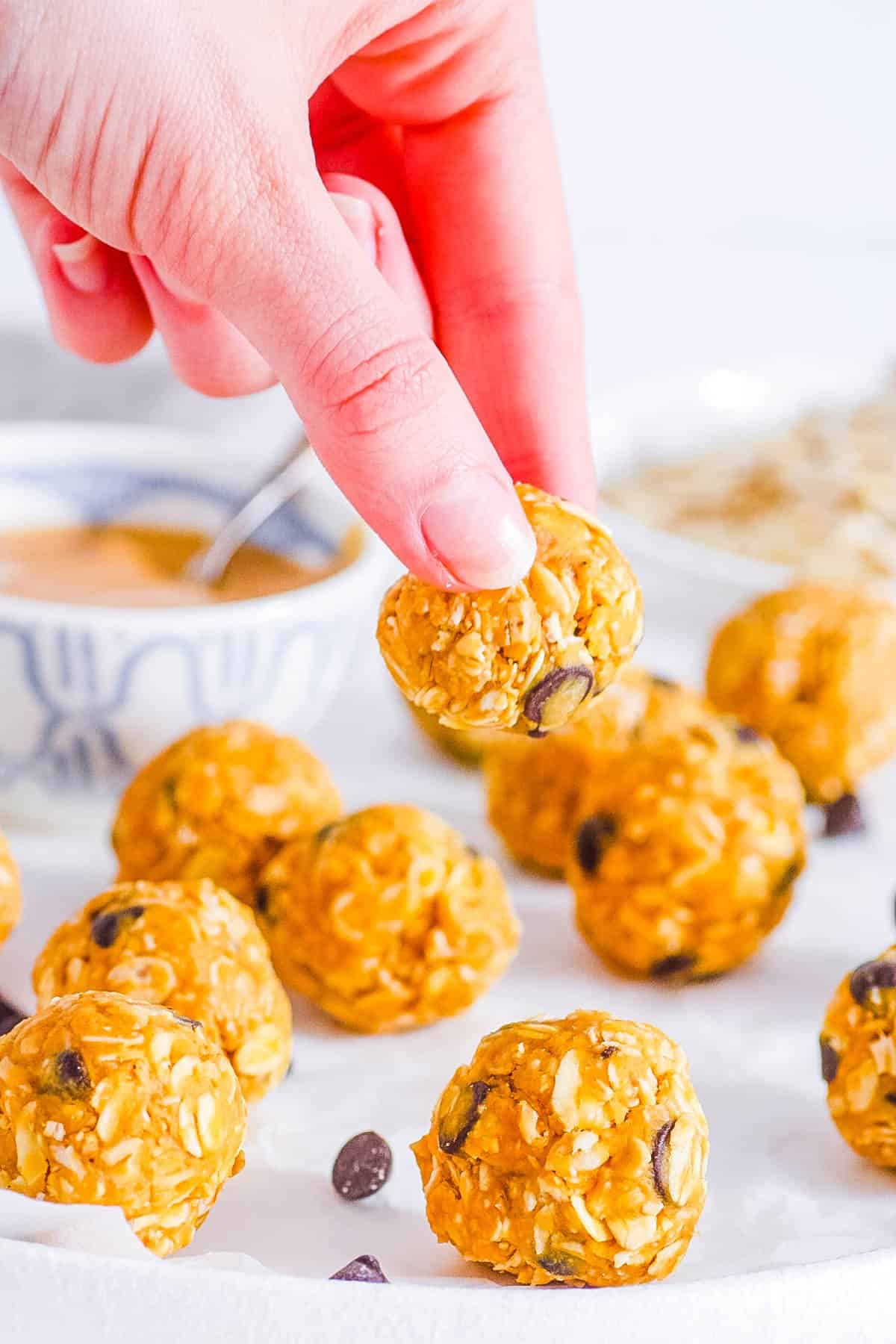
Want to Save This Recipe?
Enter your email & I’ll send it to your inbox. Plus, get great new recipes from me every week!
By submitting this form, you consent to receive emails from The Picky Eater.
Love this plant based dessert recipe? Please leave a 5-star rating 🌟 in the recipe below and/or a review in the comments section further down the page!
You can also FOLLOW ME on FACEBOOK, INSTAGRAM, and PINTEREST to see more delicious, healthy, family-friendly food, and if you have any questions, I’m here to help!
📋 Recipe Card
Healthy No-Bake Peanut Butter Bliss Balls
My healthy, easy no bake peanut butter bliss balls are loaded with creamy peanut butter and chocolate flavor, making them a hit with both kids and adults alike. Enjoy these as an on-the-go breakfast, wholesome snack, or healthy dessert alternative! They’re also dairy-free, vegan, gluten-free, and low in sugar, making them ideal for a variety of dietary preferences.
Servings: 16 balls
Calories: 93kcal
-
In a large bowl, using a wooden spoon, stir together the oats, peanut butter, chocolate chips, maple syrup, vanilla, salt (and protein powder, if using) until combined.
-
Line a baking sheet with parchment paper.
-
Taking small handfuls of the mixture, roll them into small balls 1-2 inches in size. Or you can use a cookie scoop. Place them onto the baking sheet.
-
Refrigerate the bites for 30 minutes or until solid. Store in an air-tight container in the fridge (they will last at least 1 week, and likely 2!)
- Use The Right Tools: Use a cookie scoop to get all of the balls the same size.
- Check The Oats: If you or someone in your family is gluten intolerant, be sure to use gluten-free oats.
- Involve The Kiddos: This is such a great no bake recipe for kids to make – get them in the kitchen!
- Adjust For Moisture: If the dough seems too wet to mold into balls, consider adding a tablespoon or two of almond flour.
- Sugar Free: If you want to make these truly sugar-free, you can omit the maple syrup, and they will still taste pretty good.
- Peanut-Free: Use your favorite alternative nut butter or seed-based butter.
- Nutritional information includes protein powder. Note: for even more protein, use 1 scoop of vegan vanilla protein powder and 1 scoop of peanut butter protein powder.
Serving: 1ball | Calories: 93kcal | Carbohydrates: 8g | Protein: 4g | Fat: 5g | Saturated Fat: 2g | Polyunsaturated Fat: 1g | Monounsaturated Fat: 2g | Cholesterol: 4mg | Sodium: 43mg | Potassium: 92mg | Fiber: 1g | Sugar: 3g
Health
Federal Experts Talk Bird Flu ‘What Ifs’ in WebMD Live Event

May 16, 2024 – Multiple U.S. agencies are working to contain the recent bird flu outbreak among cattle to prevent further spread to humans (beyond one case reported in early April) and use what we learned before, during, and after the COVID-19 pandemic to keep farm workers and the general public safe.
Fingers crossed, the bird flu will be contained and peter out. Or the outbreak could continue to spread among dairy cattle and other animals, threatening the health and livelihoods of farmers and others who work with livestock.
Or the virus could change in a way that makes it easier to infect and spread among people. If this happens, the worst-case scenario could be a new influenza pandemic.
With so many unknowns, WebMD brought together experts from four federal agencies to talk prevention, monitoring, and what the “what ifs” of bird flu might look like.
Communication with the public “about what we know, what we don’t know, and ways you and your family can stay safe is a priority for us at CDC,” said Nirav D. Shah, MD, JD, the CDC’s principal deputy director. “We at the federal level are responding, and we want the public to be following along.”
People should consult the websites for the CDC, FDA, U.S. Department of Agriculture (USDA), and the Administration for Strategic Preparedness and Response (ASPR) for updates.
It is essential to not only stay informed, but to seek trusted sources of information, Shah said during “Bird Flu 2024 – What You Need to Know,” an online briefing jointly sponsored by the CDC and WebMD.
An ‘Experimental Hamburger’
If one take-home message emerged from the event, it was that the threat to the general public remains low.
The retail milk supply is safe, although consuming raw or unpasteurized milk is not recommended. “While commercial milk supply is safe, we strongly advise against drinking raw milk,” said Donald A. Prater, DVM, acting director for the FDA’s Center for Food Safety and Applied Nutrition.
As for other foods, thoroughly cooked eggs are less risky than raw eggs, and the nation’s beef supply remains free of the virus as well.
For years, federal inspectors have purchased and tested meat at retail stores, said Eric Deeble, DVM, USDA deputy assistant secretary for the Office of Congressional Relations. So far, H5N1, the virus behind bird flu, has not been detected in beef.
The USDA took testing a step further and recently cooked ground beef from dairy cows in their lab. Using what Deeble described as an “experimental hamburger,” the agency showed cooking beef to 165 F or higher kills the virus if it ever becomes necessary.
The federal government now requires all cattle be tested and be free of bird flu virus before crossing any state lines. The government is also reimbursing farmers for veterinary care and loss of business related to the outbreak, and supply personal protective equipment (PPE) like gloves, masks, and face shields to workers.
Vaccination Not Recommended Now
Federal scientists know enough about H5N1 virus to create vaccines against it quickly if the need arises. It’s more about planning ahead at this point. “Vaccines are not part of our response right now,” said David Boucher, PhD, director of infectious diseases preparedness and response at the Administration for Strategic Preparedness and Response.
If the virus changes and becomes a bigger threat to people, “we have the building blocks to produce a vaccine,” Boucher added.
An event attendee asked if the seasonal flu shot offers any protection. “Unfortunately, the flu shot you got last year does not provide great protection from the avian flu,” Shah responded. “It might do a little bit … but that is the vaccine for seasonal flu. This is something more novel.”
Treatments Stockpiled and Ready
Antiviral medications, which if given early in the course of bird flu infection could shorten the severity or duration of illness, are available now, Shah said. The dairy farmer who was infected with bird flu earlier this year responded to oseltamivir (Tamiflu) treatment, for example.
When it comes to bird flu symptoms, the fact that the only infected person reported so far this year developed pink eye, also known as conjunctivitis, is interesting, Shah said. Officials would have expected to see more typical seasonal flu symptoms, he added.
“Influenza is not a new virus,” Boucher said. “With this strain of influenza, we are not seeing any genetic markers associated with resistance to antivirals. That means the antivirals we take for seasonal influenza would also be available if needed to treat H5N1.”
ASPR has stockpiled Tamiflu and three other antivirals. “We do have tens of millions of courses that can be distributed around the country if we need them,” he added.
“Influenza is an enemy we know well,” Boucher said. That is why “we have antivirals ready to go now and many types of PPE.”
Science in Action
The feds intend to stay on the case. They will continue to monitor emergency department visits, lab test orders, and wastewater samples for any changes suggesting a human pandemic risk is growing.
“While we’ve learned a great deal, there are still many things we do not know,” Deeble said.
Shah added, “As in any outbreak, this is an evolving situation and things can change. What you are seeing now is science in action.”
For the latest updates on bird flu in the United States, visit the CDC’s H5N1 Bird Flu: Current Situation Summary website.
-

 African History4 months ago
African History4 months agoBlack History Facts I had to Learn on My Own pt.6 📜
-

 African History4 years ago
African History4 years agoA Closer Look: Afro-Mexicans 🇲🇽
-

 African History1 year ago
African History1 year agoPROOF AFRICAN AMERICANS AIN'T FROM AFRICA DOCUMENTED EVIDENCE
-

 African History2 years ago
African History2 years agoHow Did Normal Medieval People Survive Winter? | Tudor Monastery Farm | Chronicle
-

 African History4 years ago
African History4 years agoA Closer Look: Afro-Mexicans 🇲🇽
-

 African History3 years ago
African History3 years agoWhat happened to the many African Kingdoms? History of Africa 1500-1800 Documentary 1/6
-

 African History3 years ago
African History3 years agoThe Entire History of Africa in Under 10 Minutes – Documentary
-

 African History2 years ago
African History2 years agoAFRO MEXICO: Black History In Mexico!

